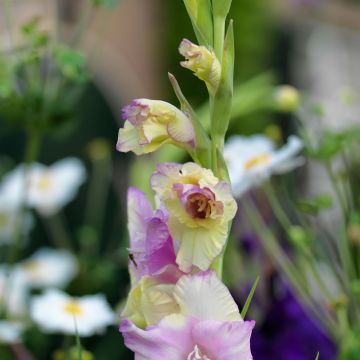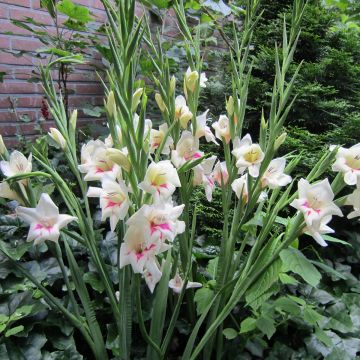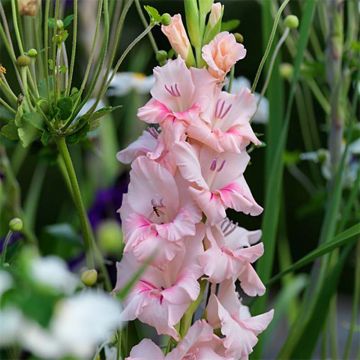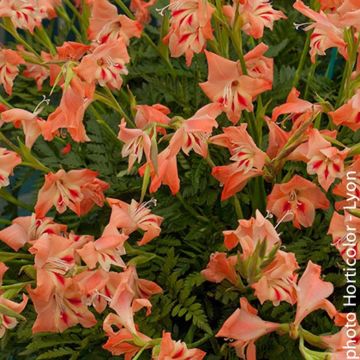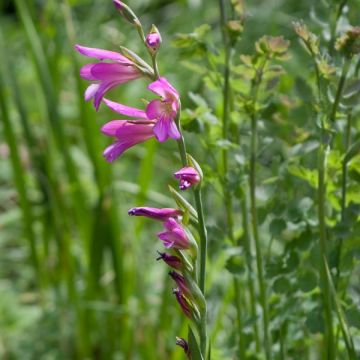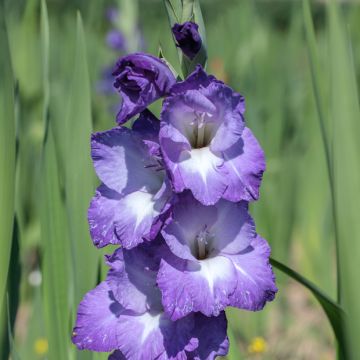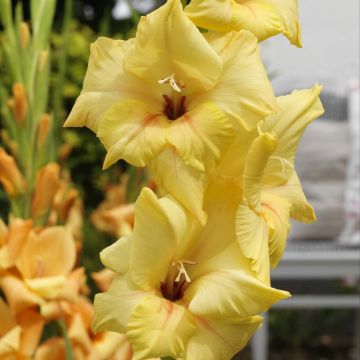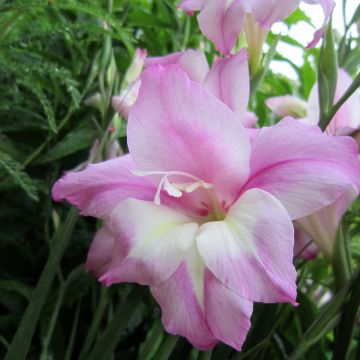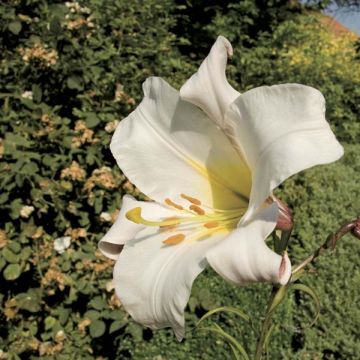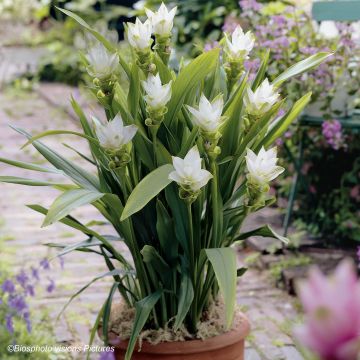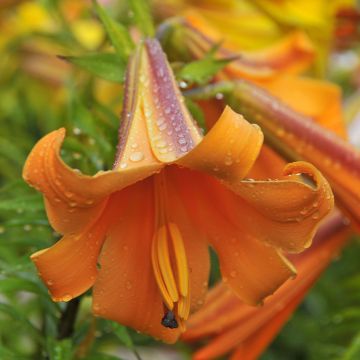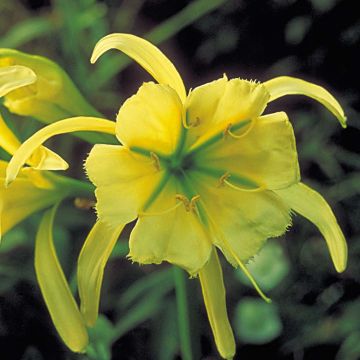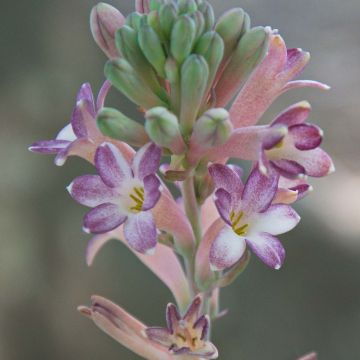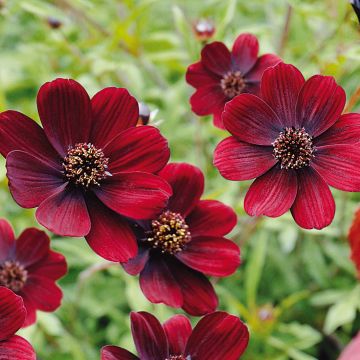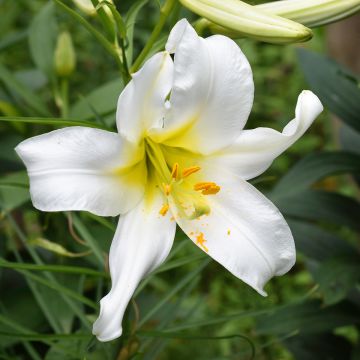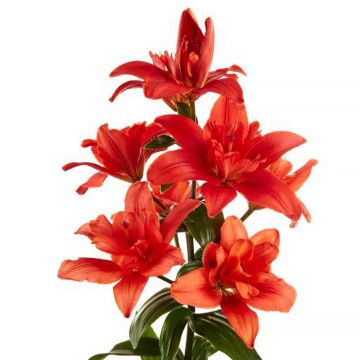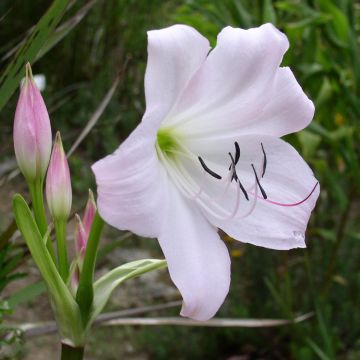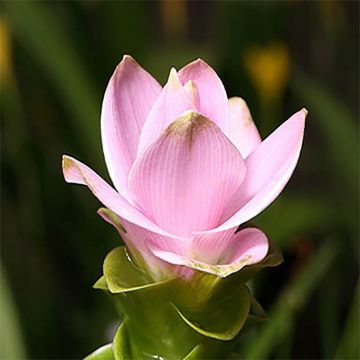Shipping country and language
Your country of residence may be:
Your country of residence is:
For a better user experience on our website, you can select:
Your shipping country:
-
Andorra
-
Austria
-
Belgium
-
Bulgaria
-
Canada
-
Chile
-
Croatia
-
Cyprus
-
Czechia
-
Denmark
-
Estonia
-
Finland
-
France
-
Germany
-
Greece
-
Hungary
-
Iceland
-
Ireland
-
Italy
-
Latvia
-
Lithuania
-
Luxembourg
-
Malta
-
Monaco
-
Netherlands
-
Poland
-
Portugal
-
Romania
-
Slovakia
-
Slovenia
-
Spain
-
Sweden
-
Switzerland
-
United Kingdom
We only deliver seed and bulb products to your country. If you add other products to your basket, they cannot be shipped.
Language:
-
French
-
German
-
Spanish
-
English
-
Italian
My Account
Hello
My wish lists
Log in / Register
Existing customer?
New customer?
Create an account to track your orders, access our customer service and, if you wish, make the most of our upcoming offers.
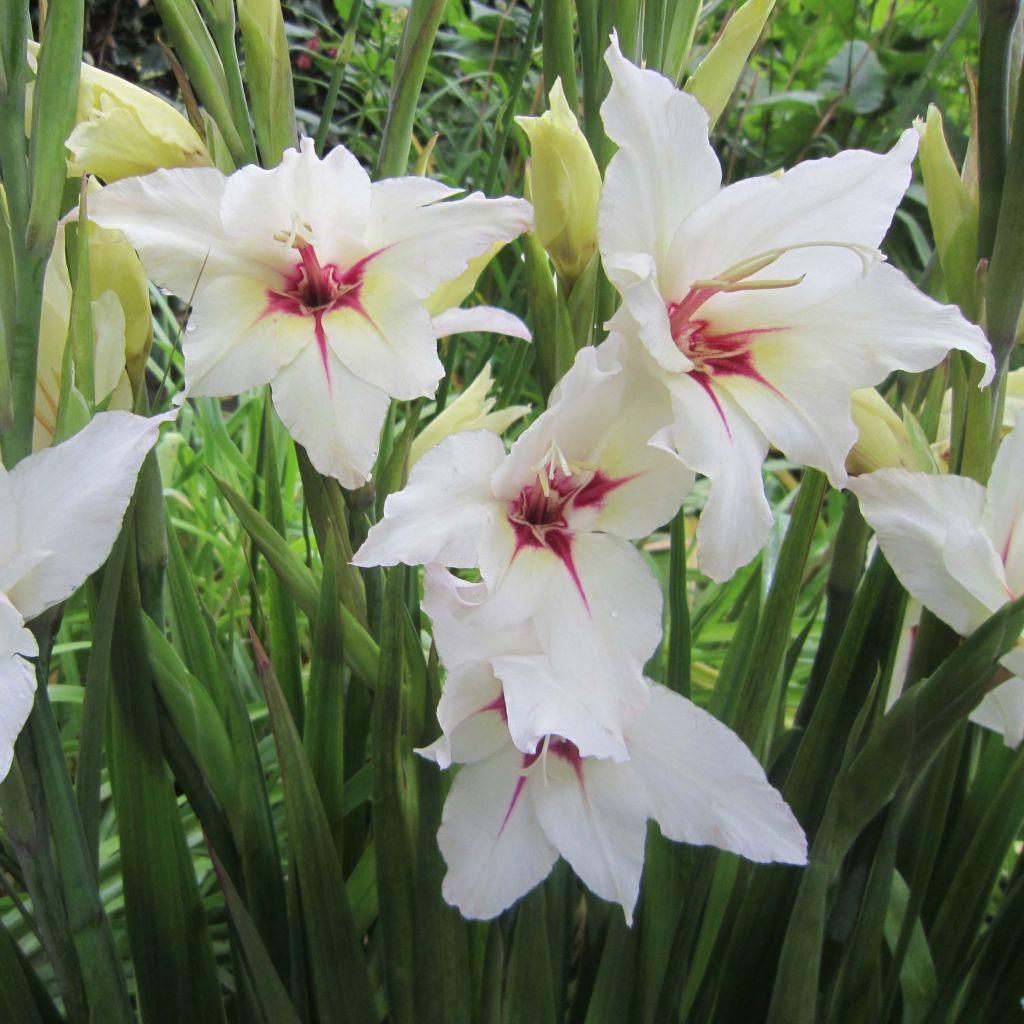

Gladiolus x callianthus Lucky Star - Abyssinian gladiolus
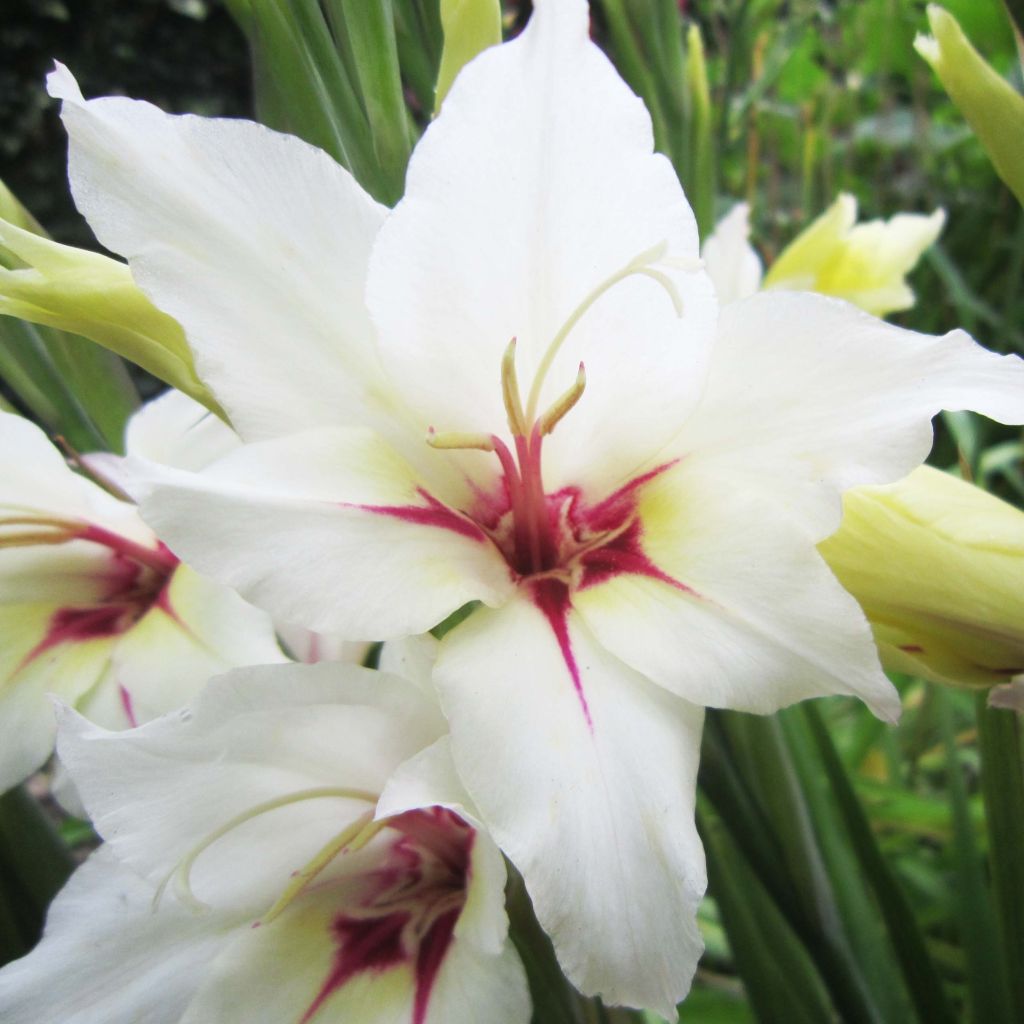

Gladiolus x callianthus Lucky Star - Abyssinian gladiolus
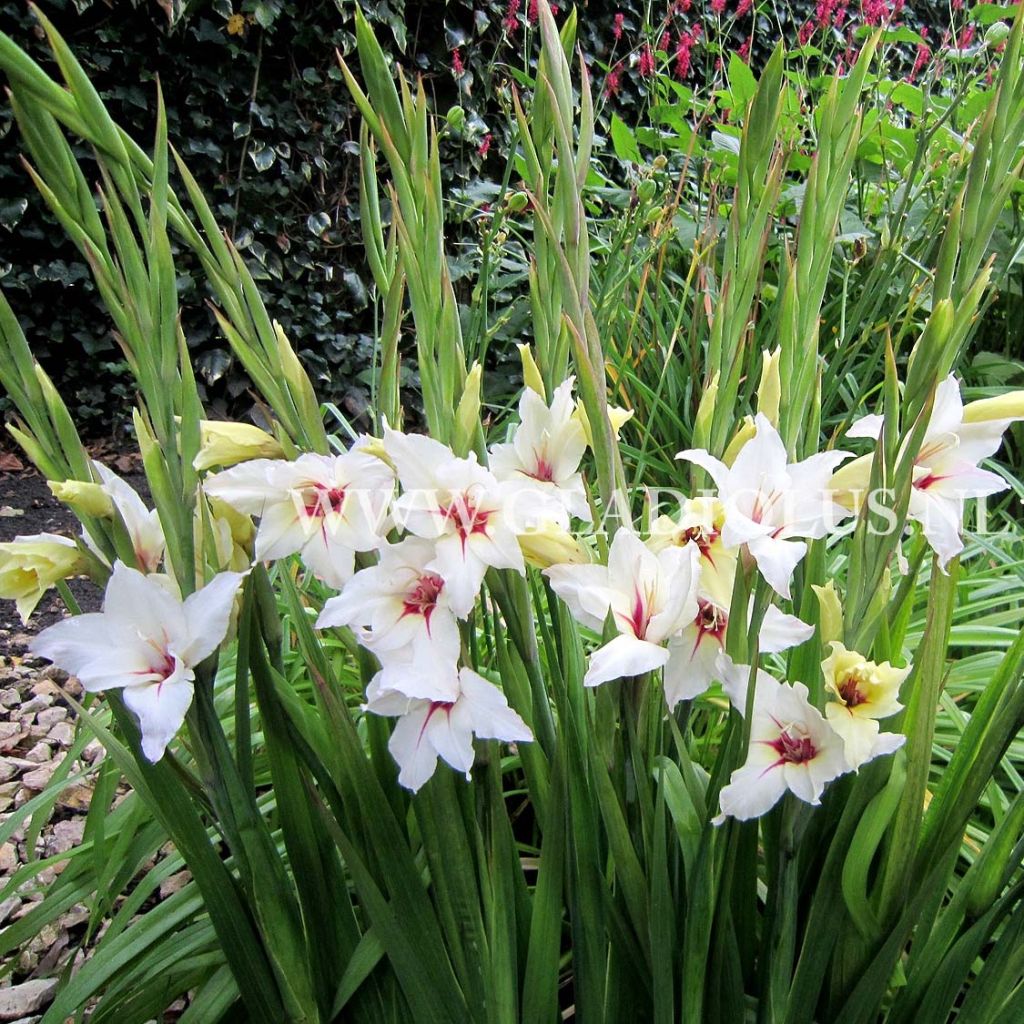

Gladiolus x callianthus Lucky Star - Abyssinian gladiolus
Gladiolus x callianthus Lucky Star - Abyssinian gladiolus
Gladiolus x callianthus Lucky Star
Abyssinian Sword Lily, Peacock Orchid, Fragrant Gladiolus, Sword Lily
He is splendid. The first flowers opened yesterday morning and in the evening, I was able to enjoy their enchanting fragrance.
Corinne, 07/08/2021
Order in the next for dispatch today!
Dispatch by letter from €3.90.
Delivery charge from €5.90 Oversize package delivery charge from €6.90.
More information
This item is not available in your country.
Schedule delivery date,
and select date in basket
This plant carries a 6 months recovery warranty
More information
We guarantee the quality of our plants for a full growing cycle, and will replace at our expense any plant that fails to recover under normal climatic and planting conditions.
From €5.90 for pickup delivery and €6.90 for home delivery
Express home delivery from €8.90.
Does this plant fit my garden?
Set up your Plantfit profile →
Description
The 'Lucky Star' Gladiolus is not like any other gladiolus: this classic New Zealand cultivar, derived from the Gladiolus callianthus, formerly known as Acidanthera murielae, has retained the wild elegance of its Abyssinian ancestor, its late flowering and its wonderful fragrance. This bulbous plant blooms from late summer to autumn, while its larger horticultural cousins are going dormant. Its tall flower stalks bear numerous graceful, triangular flowers with a pale yellow throat animated by a lavender-pink star. Their fragrance perfumes the September evenings and autumn bouquets. Relatively hardy in dry soil, this bulb can be grown in most regions like other gladioli, in fertile, moist, well-drained soil, and should be stored in winter.
The 'Lucky Star' Gladanthera, introduced around 1966 by Mrs Joan Wright, is a cross between the 'Filigree' cultivar and the wild Abyssinian gladiolus, the Gladiolus callianthus. It belongs to the Iridaceae family. It is a perennial herbaceous plant with a storage organ called a corm, which is a kind of globular, brown bulb. In spring, as soon as temperatures are warm enough, the corm produces long, sheathing, sword-shaped linear leaves, measuring about fifty centimetres. They are medium green, with parallel veins, slightly stiff. The flowering occurs late in most climates, from August to October depending on the region. Flower spikes, which can reach a height of 1.10 m (4ft), emerge from the foliage. Each spike carries 8 to 10 flower buds along almost its entire length, with cream-coloured petals. They open into 8 cm (3in) diameter flowers with a long tubular calyx. They consist of 6 tepals, with 3 larger overlapping ones, 2 lateral and one superior. These tepals are white, slightly tinged with pale yellow and highlighted by a pink-violet base. The flowers' fragrance is more pronounced in the late afternoon. This nectar-rich flowering is highly visited by pollinating insects. The corm of the Lucky Star gladiolus can withstand frosts of around -9°C (15.8°F) in dry soil. It should be lifted once the foliage turns yellow, then kept dry and frost-free during winter outside mild regions.
The 'Lucky Star' Gladiolus is easy to grow, both in the ground and in pots. It is an extremely graceful gladiolus, which pairs well with grasses like pennisetum, eragrostis or stipa, as well as simple annuals like centaurea or nigella, in a slightly wild, well-drained bed. This plant, with its very natural charm, far from the stiff and somewhat kitschy appearance of its Dutch cousins, deserves more than a row of stakes along the edge of a vegetable garden: plant it in groups of 20 bulbs next to gauras and linarias, for example. It can also bring life to a border of irises, which can be a bit dull after their spring flowering. Its slightly stiff foliage can be cleverly hidden by low plants with light foliage, such as nepeta or perennial geraniums. Elaeagnus ebbingei will provide a dark, neutral background that will showcase them while protecting them from the wind.
Report an error about the product description
Gladiolus x callianthus Lucky Star - Abyssinian gladiolus in pictures
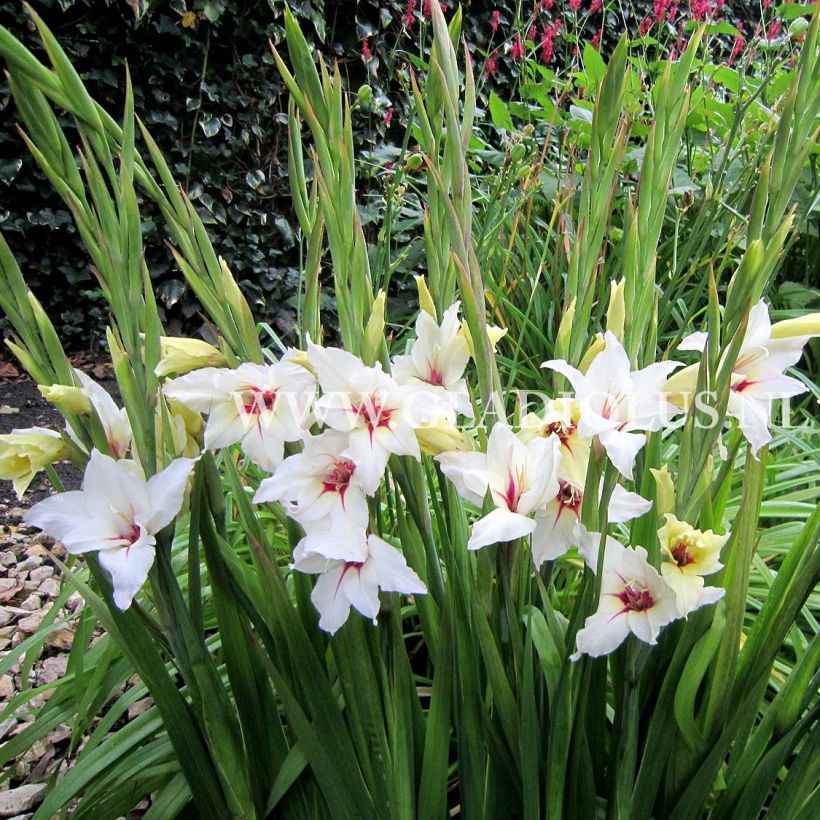

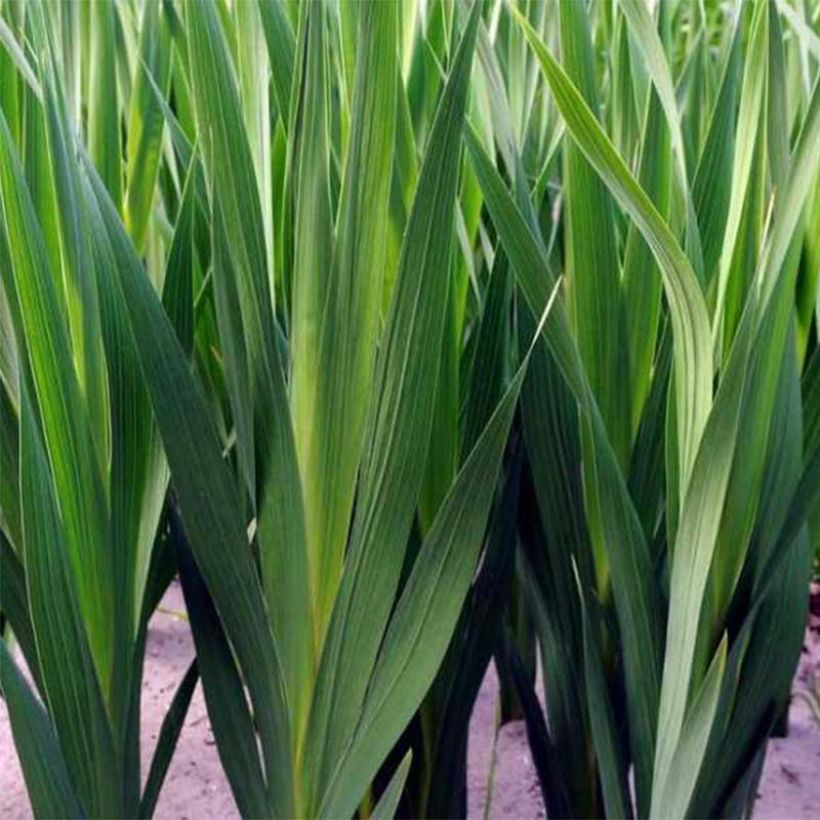

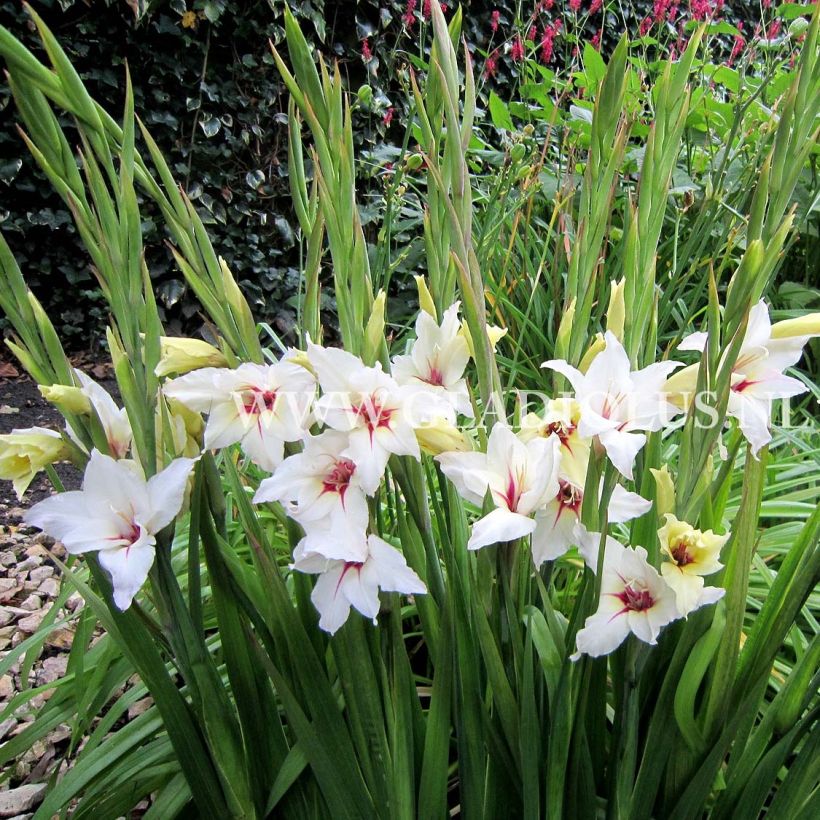

Plant habit
Flowering
Foliage
Botanical data
Gladiolus
x callianthus
Lucky Star
Iridaceae
Abyssinian Sword Lily, Peacock Orchid, Fragrant Gladiolus, Sword Lily
Cultivar or hybrid
Other Gladioli
Planting and care
Plant the corms of 'Lucky Star' gladiolus in the spring, in well-drained soil and in a sunny, sheltered location, protected from the wind. Bury them under 8 to 10 cm (3 to 4in) of soil. They appreciate horn and dried blood, but they fear fertiliser and manure. Ensure that the plants do not lack water during the growth and flowering period. In warm and mild climates, the bulbs can be planted in the autumn: they will then bloom in the spring and go dormant in the summer (this is the case in protected Mediterranean regions such as the orange zone). 'Lucky Star' gladiolus can tolerate short freezes of around -9°C (15.8°F) in dry soil. In colder regions, the bulbs should be dug up before the first frosts. Keep them under cover in a well-ventilated, frost-free room. You can also grow them in pots that you will protect from the cold (20 bulbs per pot measuring 20 to 22 cm (8 to 9in)).
Planting period
Intended location
Care
-
, onOrder confirmed
Reply from on Promesse de fleurs
Fragrant flowering bulbs
Haven't found what you were looking for?
Hardiness is the lowest winter temperature a plant can endure without suffering serious damage or even dying. However, hardiness is affected by location (a sheltered area, such as a patio), protection (winter cover) and soil type (hardiness is improved by well-drained soil).

Photo Sharing Terms & Conditions
In order to encourage gardeners to interact and share their experiences, Promesse de fleurs offers various media enabling content to be uploaded onto its Site - in particular via the ‘Photo sharing’ module.
The User agrees to refrain from:
- Posting any content that is illegal, prejudicial, insulting, racist, inciteful to hatred, revisionist, contrary to public decency, that infringes on privacy or on the privacy rights of third parties, in particular the publicity rights of persons and goods, intellectual property rights, or the right to privacy.
- Submitting content on behalf of a third party;
- Impersonate the identity of a third party and/or publish any personal information about a third party;
In general, the User undertakes to refrain from any unethical behaviour.
All Content (in particular text, comments, files, images, photos, videos, creative works, etc.), which may be subject to property or intellectual property rights, image or other private rights, shall remain the property of the User, subject to the limited rights granted by the terms of the licence granted by Promesse de fleurs as stated below. Users are at liberty to publish or not to publish such Content on the Site, notably via the ‘Photo Sharing’ facility, and accept that this Content shall be made public and freely accessible, notably on the Internet.
Users further acknowledge, undertake to have ,and guarantee that they hold all necessary rights and permissions to publish such material on the Site, in particular with regard to the legislation in force pertaining to any privacy, property, intellectual property, image, or contractual rights, or rights of any other nature. By publishing such Content on the Site, Users acknowledge accepting full liability as publishers of the Content within the meaning of the law, and grant Promesse de fleurs, free of charge, an inclusive, worldwide licence for the said Content for the entire duration of its publication, including all reproduction, representation, up/downloading, displaying, performing, transmission, and storage rights.
Users also grant permission for their name to be linked to the Content and accept that this link may not always be made available.
By engaging in posting material, Users consent to their Content becoming automatically accessible on the Internet, in particular on other sites and/or blogs and/or web pages of the Promesse de fleurs site, including in particular social pages and the Promesse de fleurs catalogue.
Users may secure the removal of entrusted content free of charge by issuing a simple request via our contact form.
The flowering period indicated on our website applies to countries and regions located in USDA zone 8 (France, the United Kingdom, Ireland, the Netherlands, etc.)
It will vary according to where you live:
- In zones 9 to 10 (Italy, Spain, Greece, etc.), flowering will occur about 2 to 4 weeks earlier.
- In zones 6 to 7 (Germany, Poland, Slovenia, and lower mountainous regions), flowering will be delayed by 2 to 3 weeks.
- In zone 5 (Central Europe, Scandinavia), blooming will be delayed by 3 to 5 weeks.
In temperate climates, pruning of spring-flowering shrubs (forsythia, spireas, etc.) should be done just after flowering.
Pruning of summer-flowering shrubs (Indian Lilac, Perovskia, etc.) can be done in winter or spring.
In cold regions as well as with frost-sensitive plants, avoid pruning too early when severe frosts may still occur.
The planting period indicated on our website applies to countries and regions located in USDA zone 8 (France, United Kingdom, Ireland, Netherlands).
It will vary according to where you live:
- In Mediterranean zones (Marseille, Madrid, Milan, etc.), autumn and winter are the best planting periods.
- In continental zones (Strasbourg, Munich, Vienna, etc.), delay planting by 2 to 3 weeks in spring and bring it forward by 2 to 4 weeks in autumn.
- In mountainous regions (the Alps, Pyrenees, Carpathians, etc.), it is best to plant in late spring (May-June) or late summer (August-September).
The harvesting period indicated on our website applies to countries and regions in USDA zone 8 (France, England, Ireland, the Netherlands).
In colder areas (Scandinavia, Poland, Austria...) fruit and vegetable harvests are likely to be delayed by 3-4 weeks.
In warmer areas (Italy, Spain, Greece, etc.), harvesting will probably take place earlier, depending on weather conditions.
The sowing periods indicated on our website apply to countries and regions within USDA Zone 8 (France, UK, Ireland, Netherlands).
In colder areas (Scandinavia, Poland, Austria...), delay any outdoor sowing by 3-4 weeks, or sow under glass.
In warmer climes (Italy, Spain, Greece, etc.), bring outdoor sowing forward by a few weeks.
